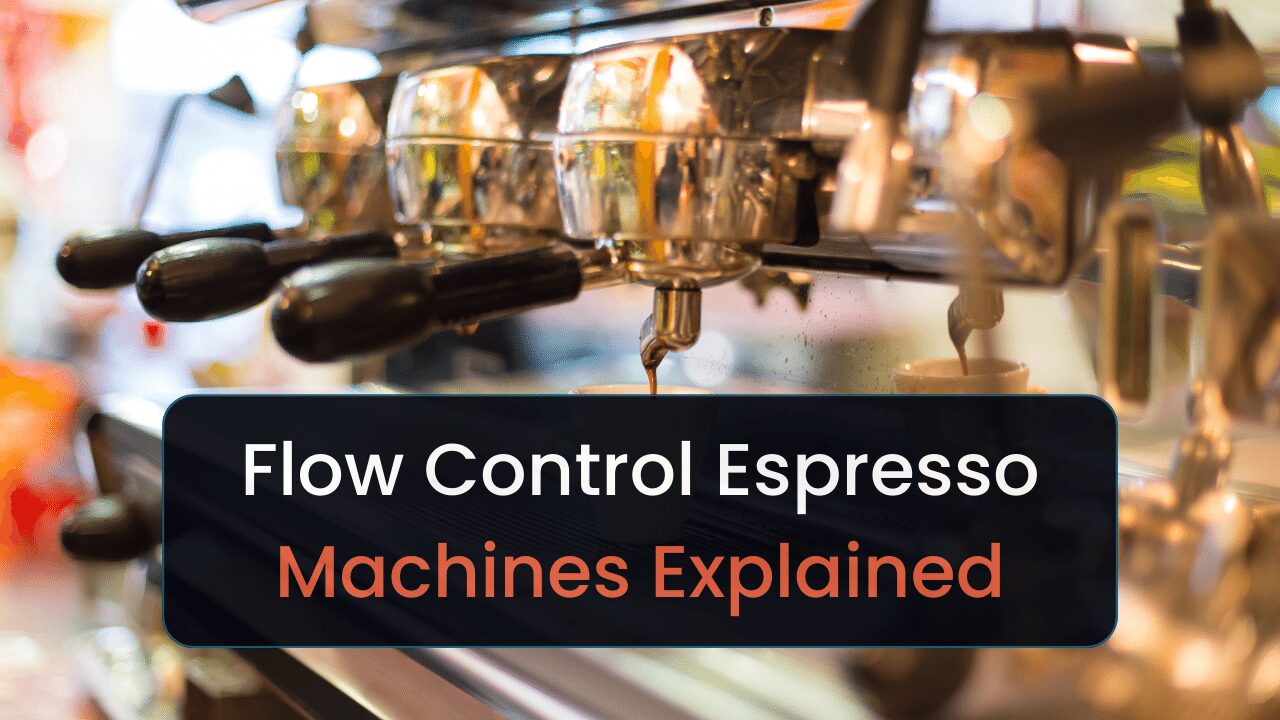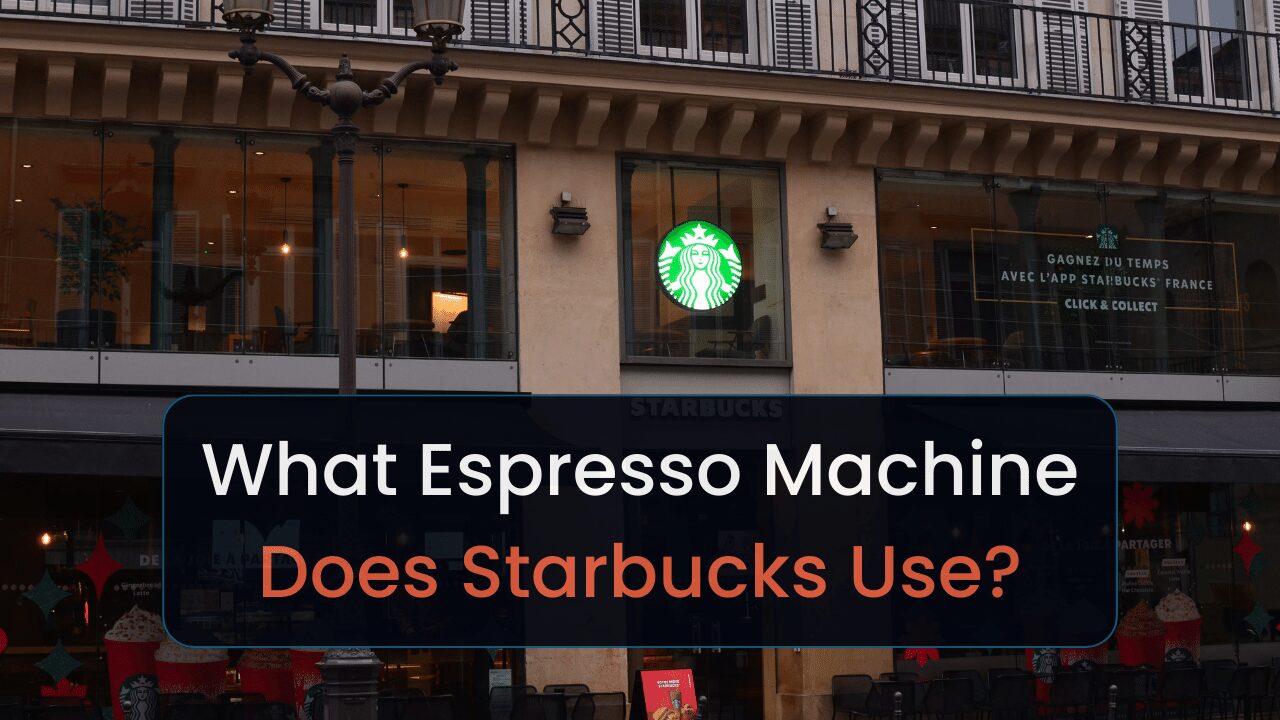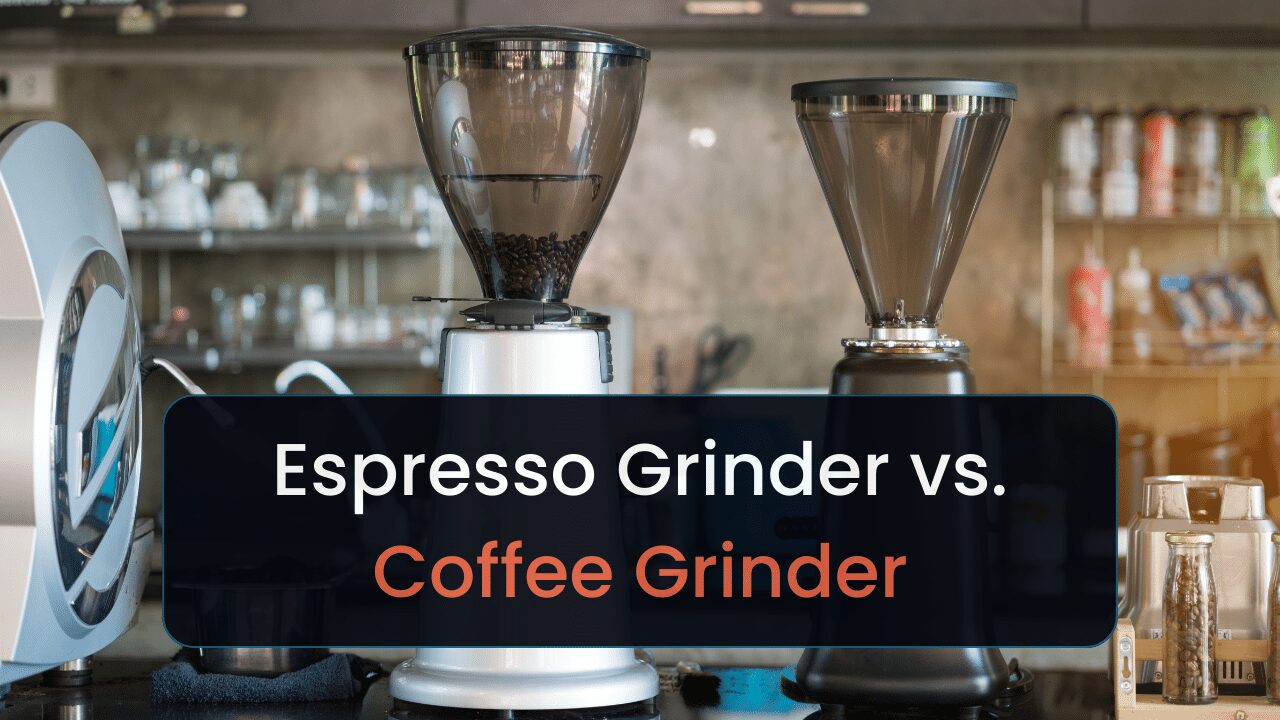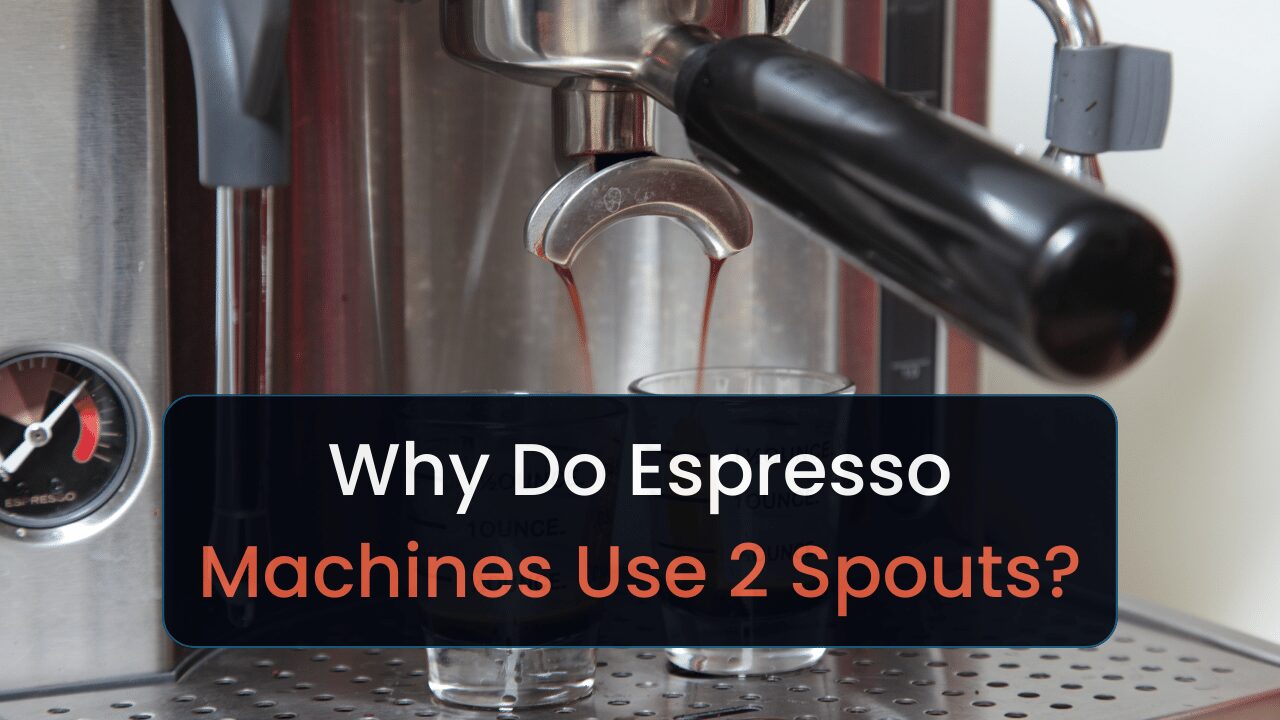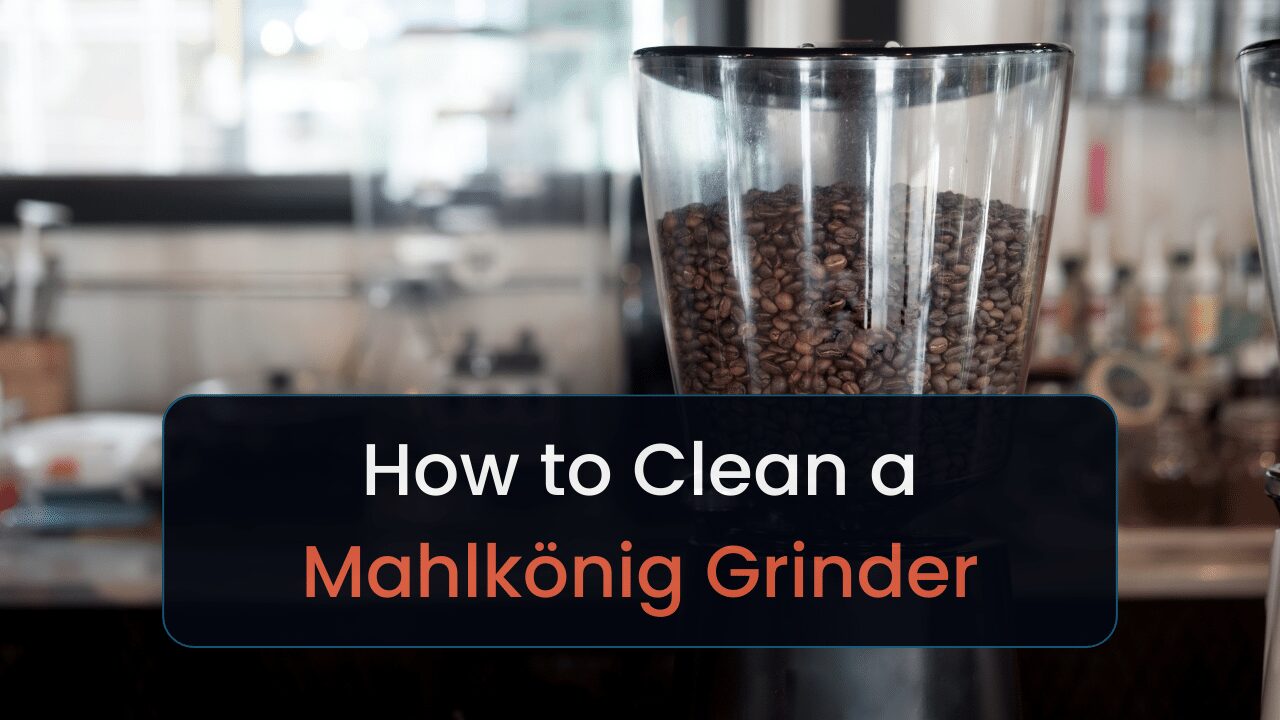This guide will compare grinders from Fiorenzato and Mazzer. Keep reading to learn more.
I’ve been hunting for a good coffee grinder and decided to compare 2 big dogs in the market.
I’ll compare the differences and similarities of various popular grinders both brands offer in different areas.
For instance, I’ll compare Fiorenzato and Mazzer grinders priced similarly that are best for home use.
Here is an overview:
Let’s dive in.
Key Takeaways
- Mazzer grinders work better for commercial use.
- Fiorenzato grinders weigh less than their competition—for the most part.
- Mazzer grinders often cost less than their counterparts.
- Fiorenzato grinders typically have more touchscreen controls.
Home Fiorenzato vs. Mazzer Grinders
I’ll cover compare the following grinders throughout the following sections:
- Fiorenzato F4 Nano
- Mazzer Super Jolly
- Fiorenzato F4 Filter
- Mazzer Mini Espresso
You’ll first find each devices specs. Afterward, I’ll emphasize areas where each device differs. From there, I’ll talk about which one is best for whom.
Coffee bean grinders for home are the lower-end and low-priced lines of what manufacturers offer. They’re not ideal for grinding beans for more than a cup or 2 of coffee at a time. These grinders also may not have as great of consistency as prosumer machines.
Check out our first comparison.
Currently, we do not offer Fiorenzato grinders in our inventory, and therefore, no links for these products are provided. However, we remain committed to unbiased and fair representation of all products.
1. Fiorenzato F4 Nano vs. Mazzer Super Jolly
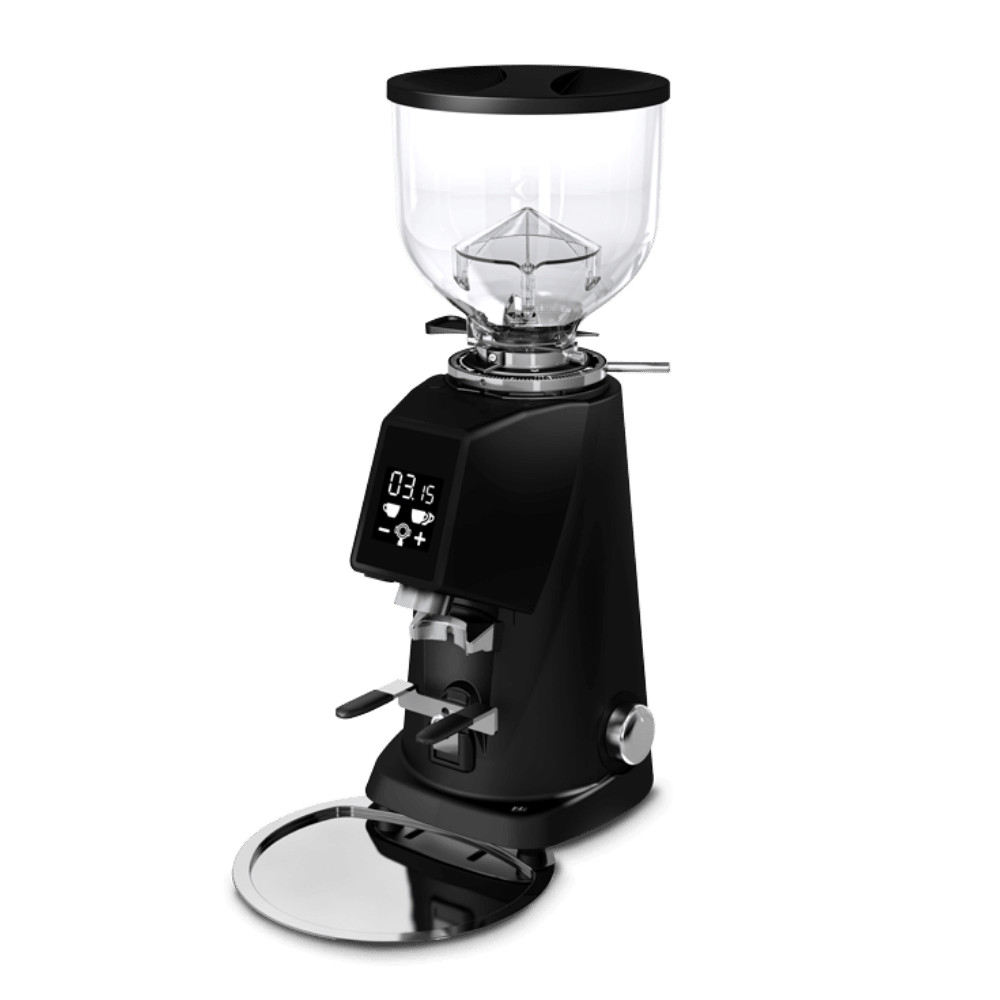
Fiorenzato F4 Nano
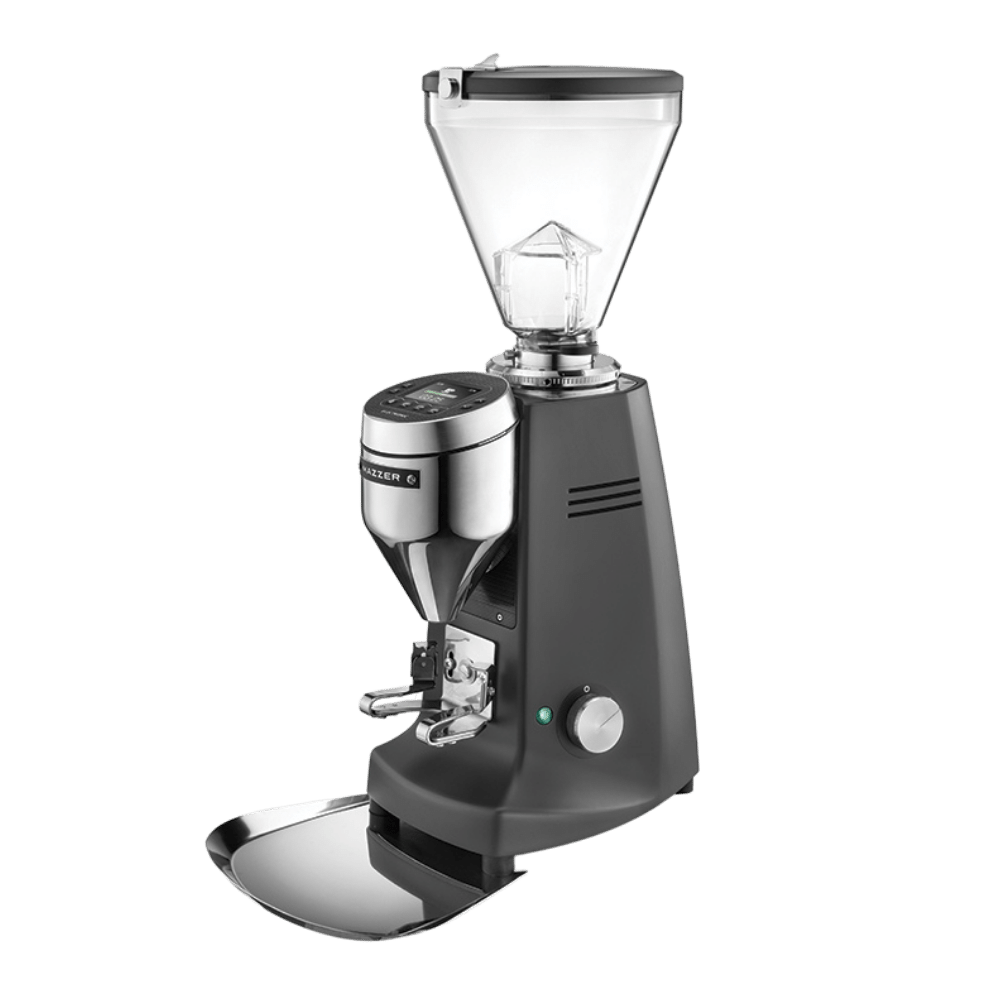
Mazzer Super Jolly
| F4 Nano | Super Jolly | |
| Price | $695 | $795 |
| Burr Type | Flat | Flat |
| Burr Material | Steel | Steel |
| Hopper Capacity | 500 g | 2.64 lbs |
| Watts | 250 watt | 350 watt |
| RPM for Burrs | 1400/min (50 Hz) 1600/min (60 Hz) | 1600/min |
| Weight | 19.8 lbs | 31 lbs |
| Dimensions (D × W × H) | 6.6 × 18.6 × 9.44 in | 16.5 × 31 × 23.5 lbs |
The F4 Nano works best for anyone who wants to brew coffee at home. While the Super Jolly works better in a light commercial environment or serving guests at home.
Both devices perform identically when it comes to grind consistency.
But the Super Jolly is huge and more expensive than the F4 Nano. It won’t fit under any wall cabinets, and it weighs much more than the F4 Nano.
The Super Jolly works best for serving more than one person because of the doser attached. You’d grind your beans, then add them to the doser. From there, you’d click, and the doser throws the beans into your portafilter or container.
However, it “throws” the beans, which could lead to a mess on your countertop.
That doesn’t matter if you’re a smaller business looking for an entry-level device.
Otherwise, the F4 Nano is more affordable and viable for home use.
Which One’s Better?
Get the F4 Nano if you’re grinding at home, and get the Super Jolly if you operate a small café or frequently entertain guests.
Want cheaper devices? Check out our next comparison.
2. Fiorenzato F4 Filter vs. Mazzer Mini Espresso
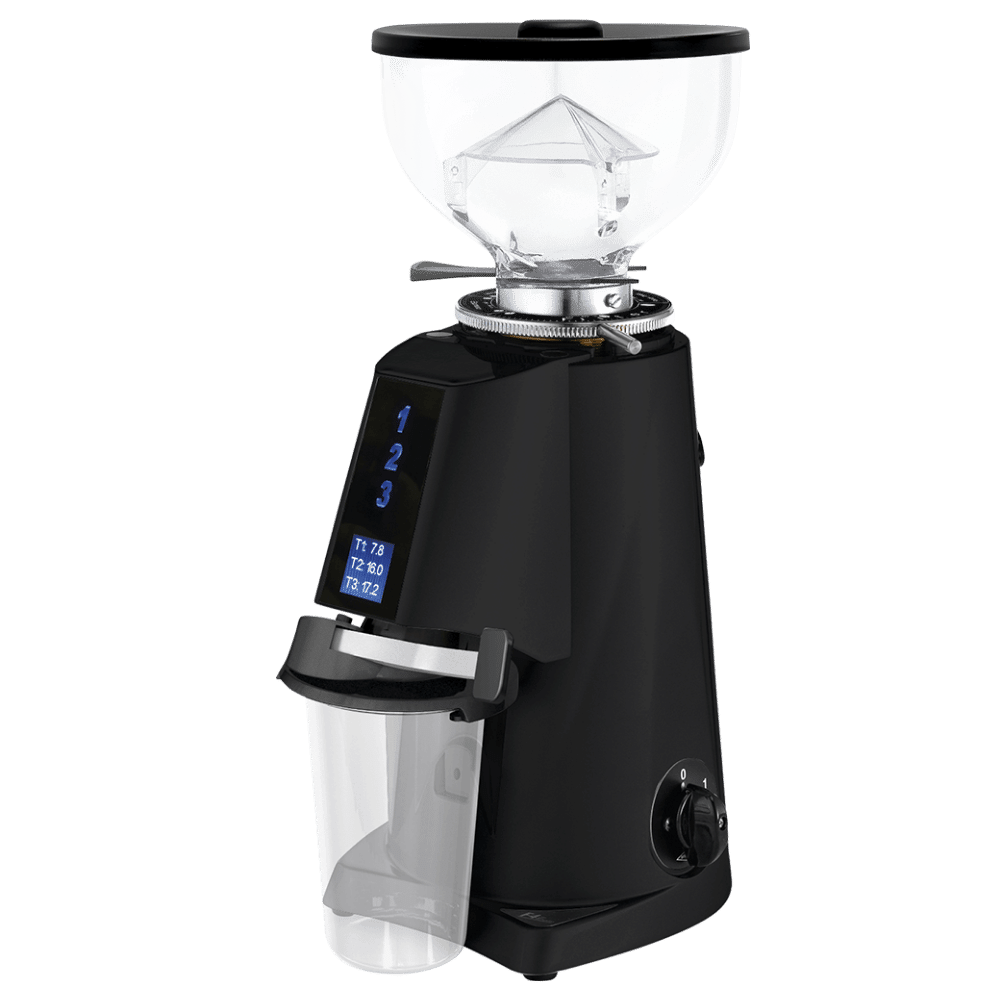
Fiorenzato F4 Filter
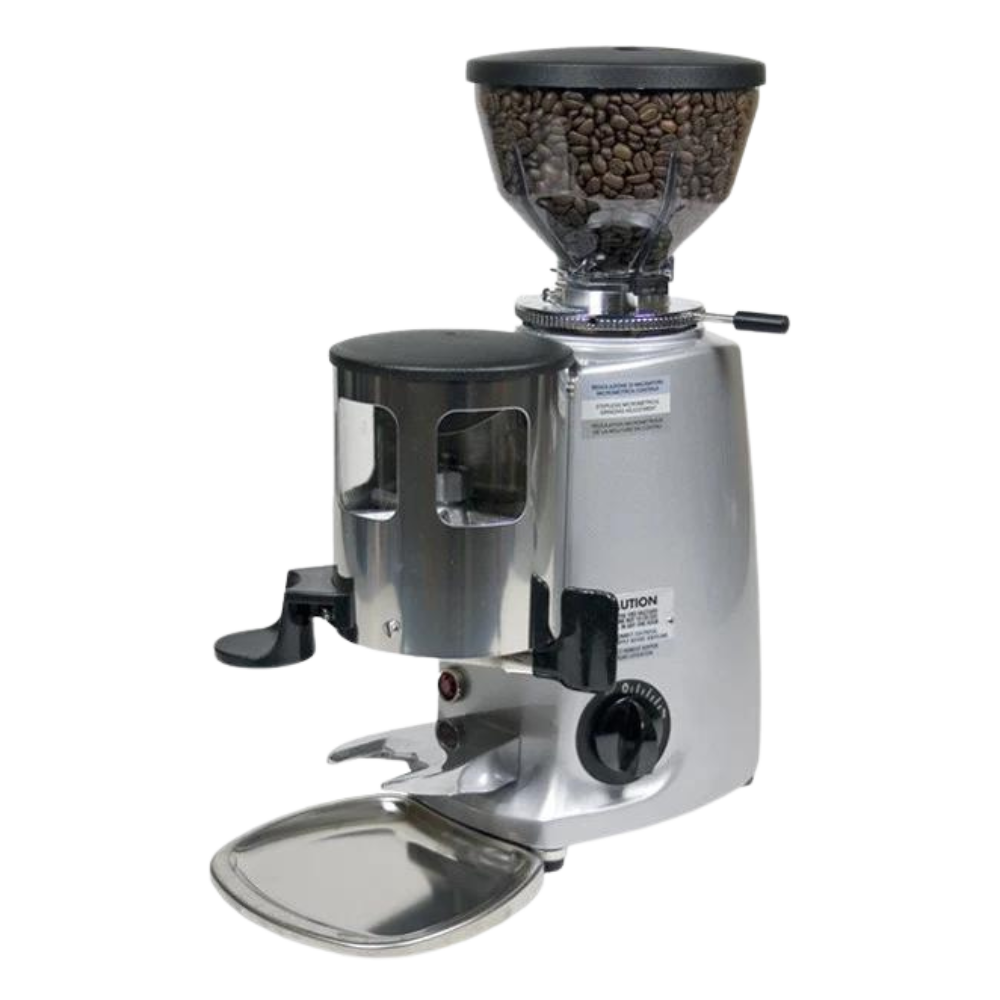
Mazzer Mini Espresso
| F4 Filter | Mini Espresso | |
| Price | $500 | $820 |
| Burr Type | Flat | Flat |
| Burr Material | Steel | Steel |
| Hopper Capacity | 250 g | 589 g |
| Watts | 250 watt | 250 watt |
| RPM for Burrs | 1350/min (50 Hz) 1550/min (60 Hz) | 1600/min |
| Weight | 24 lbs | 22.7 lbs |
| Dimensions (D × W × H) | 6.65 × 18.6 × 9.44 in | 11 × 22.5 × 16.5 in |
The Mazzer Mini Espresso is a better choice for an espresso grinder at a small café with less than 100 customers daily. The F4 Filter works as a better all-in-one grinder for different brew types.
The Mini Espresso excels for espresso because it’s a stepless grinder. Meaning, it has infinite grind options for you to choose.
Though many recommend the Mini Espresso for small cafés or coffee shops, it has a 58 mm burr, which doesn’t make it ideal for grinding large amounts of coffee at a time. The F4 Filter has 64 mm burrs, making it better for grinding multiple servings.
One of the vendor’s websites specifically recommends getting a separate grinder for coarse brew methods instead of using the Mini Espresso [1]. That eliminates any potential this machine could have had for being an all-in-one grinder.
Based on my experience, the Fiorenzato F4 Filter had no issue grinding for more coarse brewing methods like filter and moka.
Which One’s Better?
Get the F4 Filter if you want a grinder for multiple brewing methods. Choose the Mini Espresso if you want a powerful device with unlimited grind settings for espresso.
Let’s move onto higher-quality devices.
Prosumer/Semi-Professional Fiorenzato vs. Mazzer Grinders
You’ll find comparisons for the following prosumer espresso grinders throughout the following sections:
- Fiorenzato F64
- Mazzer Mini Doserless Type A
I’ll first compare each machine’s specs at similar price points. From there, I’ll cover the differences between each device, then explain who each is best for. If there’s a “winner,” I’ll let you know.
If you’re unfamiliar with what “prosumer” means, think of commercial equipment for home use. These machines are built to last for a long time, but they won’t take up too much room like devices for businesses.
Let’s dive in.
Fiorenzato F64 EVO vs. Mazzer Mini Doserless Type A
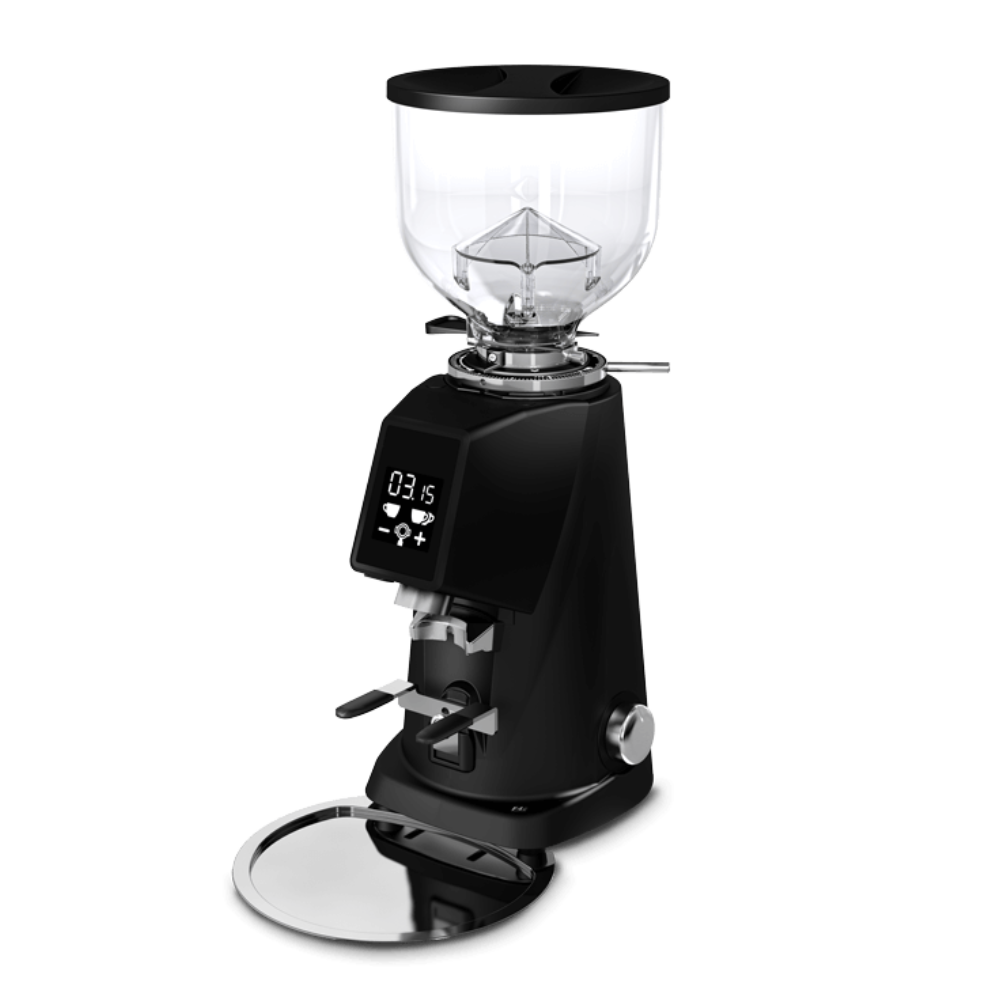
Fiorenzato F64 EVO
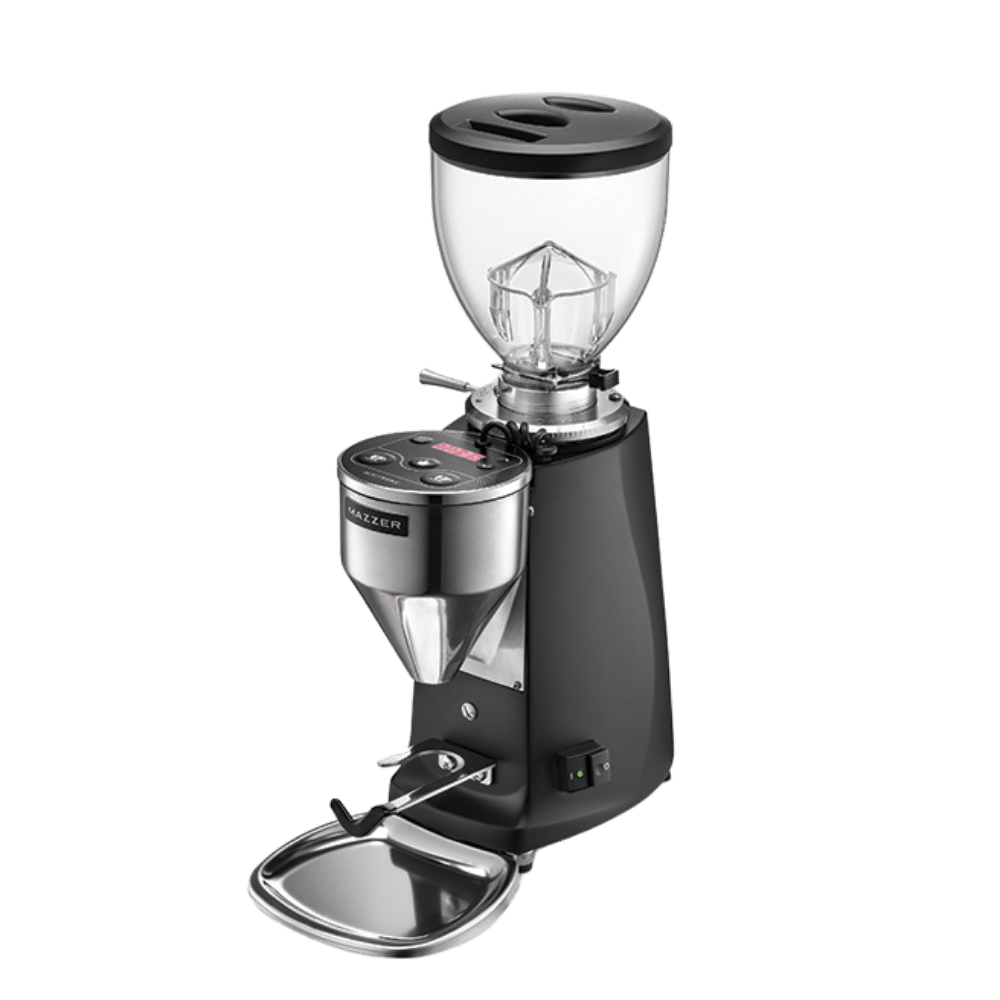
Mazzer Mini Doserless Type A
| F64 EVO | Mini Doserless Type A | |
| Price | $1,300 | $1,320 |
| Burr Type | Flat | Flat |
| Burr Material | Steel | Steel |
| Hopper Capacity | 2.20 lbs | 1.32 lbs |
| Watts | 350 watt | 250 watt |
| RPM for Burrs | 1350/min (50 Hz) 1550/min (50 Hz) | 1600/min |
| Weight | 28.66 lbs | 22.5 lbs |
| Dimensions (D × W × H) | 9.05 × 24 × 10.6 in | 10.5 × 7 × 16.5 in |
The Mini A works best for compact commercial environments like small coffee shops because of its dosing system. Meanwhile, the F64 EVO works better for home use due to all the customizations you can make.
For instance, the F64 EVO touchscreen allows you to select whether you want to grind for 1, 2, or 3 espresso shots. The Mini A focuses on more manual controls, which makes them easier to operate for new hires.
Otherwise, there’s not much else to cover with these devices.
Which One’s Better?
Get the Mini Doserless Type A if you’re a small café or coffee shop. Opt for the F64 EVO if you’re brewing espresso at home.
Business owners will want to check out this next comparison.
Commercial/High Volume Fiorenzato vs. Mazzer Grinders
Here are some grinders for businesses that we’ll compare:
- Fiorenzato F83
- Mazzer Major V Electronic
I’ll compare the specs of each device, then talk about areas where each grinder surpasses the other. I’ll then talk about whom each grinder is best for.
Commercial coffee bean grinders grind coffee beans quickly, producing a consistent grind size for making high-quality coffee. They’re typically much more durable and robust than home coffee grinders, and they can grind a large volume of coffee beans in a short period.
Let’s dive in.
Fiorenzato F83 E Pro vs. Mazzer Major V Electronic

Fiorenzato F83 E Pro
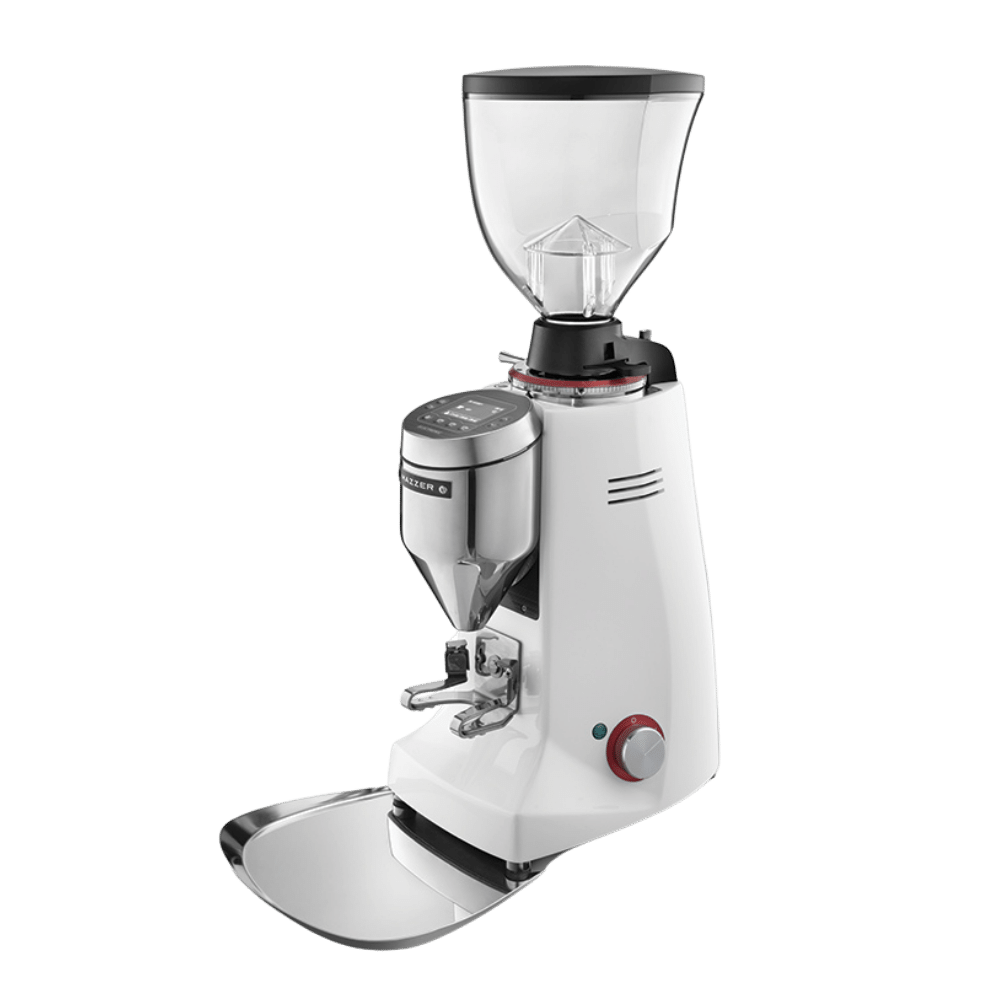
Mazzer Major V Electronic
| F83 E Pro | Major V Electronic | |
| Price | $2,450 | $2,220 |
| Burr Type | Flat | Flat |
| Burr Material | Titanium coated | High carbon steel |
| Hopper Capacity | 3.3 lbs | 3.5 lbs |
| Watts | 650 watt | 650 watt |
| RPM for Burrs | 1350/min (50 Hz) 1550/min (60 Hz) | 1400 (50 Hz)1600 (60 Hz) |
| Weight | 33.1lbs | 45.2 lbs |
| Dimensions (D × W × H) | 9 × 10.6 × 26.3 in | 18.75 × 10 × 26 in |
Both grinders will work well for high-volume businesses. Especially the Major V Electronic. This coffee cart vendor said he served more than 1,000 people in a few days while having no issues with the grinder [2].
And both grinders have fan control systems to prevent your device from overheating during operation.
Which one is better, then?
The titanium-coated burrs on the F83 EVO Pro will last longer than regular steel burrs due to having more resistance to heat, along with wear and tear. However, sometimes the metal could chip off and get in your coffee.
The F83 EVO PRO also weighs less than Mazzer’s grinder, making it ideal for coffee carts.
Which One’s Better?
I chose the Mazzer Major V Electronic because it’s cheaper and doesn’t have the titanium coating. Even without the coating, steel burrs could last more than 10 years with proper care [3].
Let’s see where each company came from.
Each Company’s History
The following sections will explain the histories of each coffee grinder manufacturer. If you prefer buying from a company with a rich history, you’ll like this section. Otherwise, you may just want to stick with the information above.
Let’s jump into a time machine and see where these brands came from.
Fiorenzato History
Fiorenzato was founded in 1936 by Pietro Fiorenzato in Mestre, Italy.
The company started as a manufacturer of coffee grinders and dosers, but was forced to switch to arms production during World War II. Making them a victim of a bombing run.
After the war, Fiorenzato rebuilt its factory and began producing coffee grinders.
In 1948, Fiorenzato introduced the first countertop coffee grinder. This invention revolutionized the coffee industry and made Fiorenzato a market leader in coffee grinders.
Throughout the 1980s and 1990s, Fiorenzato continued to innovate and diversify its product line. The company became one of the first to implement electronics into its grinders.
In 2005, Pietro Fiorenzato handed over the company to his children, who introduced a new development strategy focused on investing more in research.
In 2009, Fiorenzato introduced the first on-demand grinder-doser, which revolutionized the coffee industry once again.
In 2017, Fiorenzato introduced the XGi smart model grinder. It uses patented technology to calculate the weight of coffee beans in seconds and ensure that every cup of coffee has the freshest taste possible.
In 2022, Fiorenzato Italy and Espresso Parts joined forces to introduce Fiorenzato espresso machines to the United States
Mazzer History
Mazzer’s story began in the 1930s as a family business manufacturing metal parts for the heavy industry [4].
In 1948 a person who lived in Venice, Italy, Luigi Mazzer, began shifting production to professional-grade coffee burrs and grinders. This switch went into full effect by the 1950s.
Over the years, they’ve tinkered with the designs of their grinders. For instance, they made a double-sided grinder.
Around the ‘70s, Mazzer began exporting their machines to the United States and France to expand their international image.
In 1976, they released the Jolly model. 5 years later, they released the Super Jolly, which remains a popular option as a prosumer coffee grinder.
In 1988, his son, Giovanni Mazzer, took control of the company. A year later, they shifted their production from Mestre to a 7,000-square-meter factory in Gardigiano. A factory in which he filled with around 20 robotic manufacturing stations.
Currently, Mazzer exports more than 80% of their volume to more than 100 countries spread throughout 5 continents [5].
That’s all.
Conclusion
Fiorenzato grinders often work better for home brewing or when grinding for multiple brewing methods. Mazzer grinders typically cost less, but produce similar results regarding grind consistency.
Are you still stuck on figuring out a grinder to get? Check out some of our other guides.

